Is Dal a Good Protein Source?
As an Indian, you’ve likely been taught by your parents, aunties, and uncles that dal is the ultimate protein source. They claim that dal provides all the protein we need in our lives. As a result, it is a staple food in most Indian households. While many Indians have come to realize the flaw in this thinking, there are still many who believe that dal is a great source of protein. However, the truth is that while dal may have some protein and nutritional value, it is far from the ideal protein source. There are many other protein sources which have protein and essential nutrients, with less of the downsides.
In this post, we’ll take a deep dive into the protein and nutrient content of different types of dal used in Indian cuisine. We’ll then compare the protein and nutrition content of dal to other protein sources. Next, we’ll explore the reasons why dal is not the best source of protein. Finally, we’ll look at some ways to increase your protein intake without needing to rely on dal.
So, let’s dive in without any further delay!
Different Types of Dal and Their Nutrition
The Indian cuisine uses a variety of dals, each with its own unique macronutrient profile. Let’s take a look at the top 10 most commonly used dals and their macronutrient content per 100 grams of dal (uncooked).
Please note that 100 grams is equivalent to 2/3 of a US measuring cup.
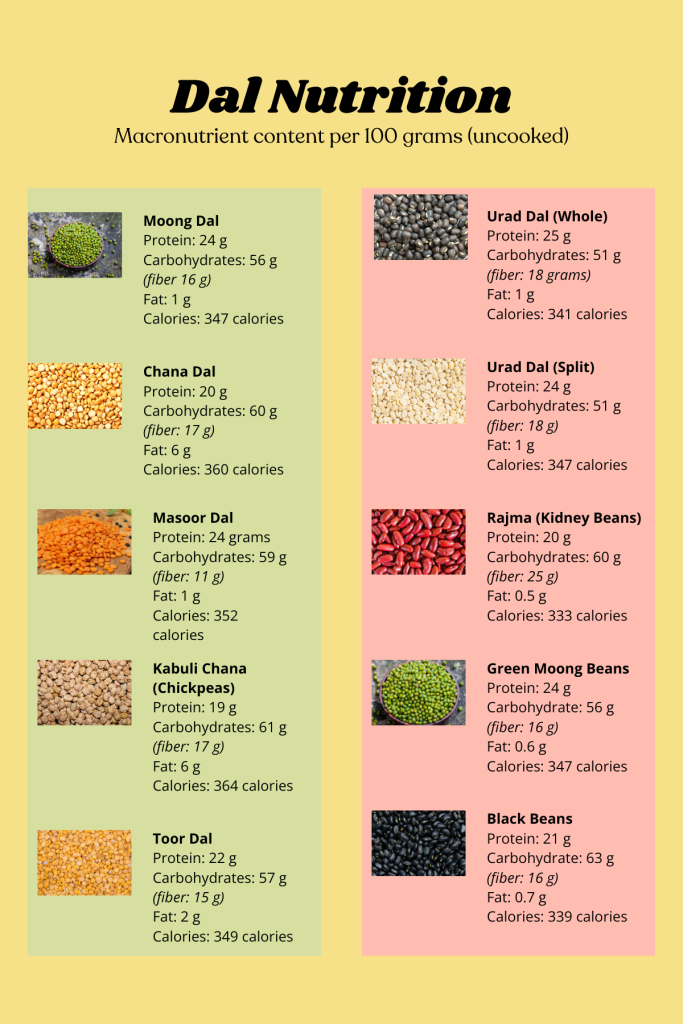
As you can see, dal does provide a decent amount of protein, but it also contains a high amount of carbohydrates. Moreover, we typically eat dal with rice or roti, which adds an additional 30 to 50 grams of carbs on top of the carbs already in dal. Therefore, relying on dal for protein can result in a meal that is very high in carbs, which can lead to weight gain and other metabolic issues.
How Does Dal Compare to Other Protein Sources?
Now that we’ve got the macronutrient profile of 100 grams of uncooked dal, let’s compare it to 100 g serving of other protein sources, both vegetarian and non-vegetarian. We’ll see how they stack up against each other.
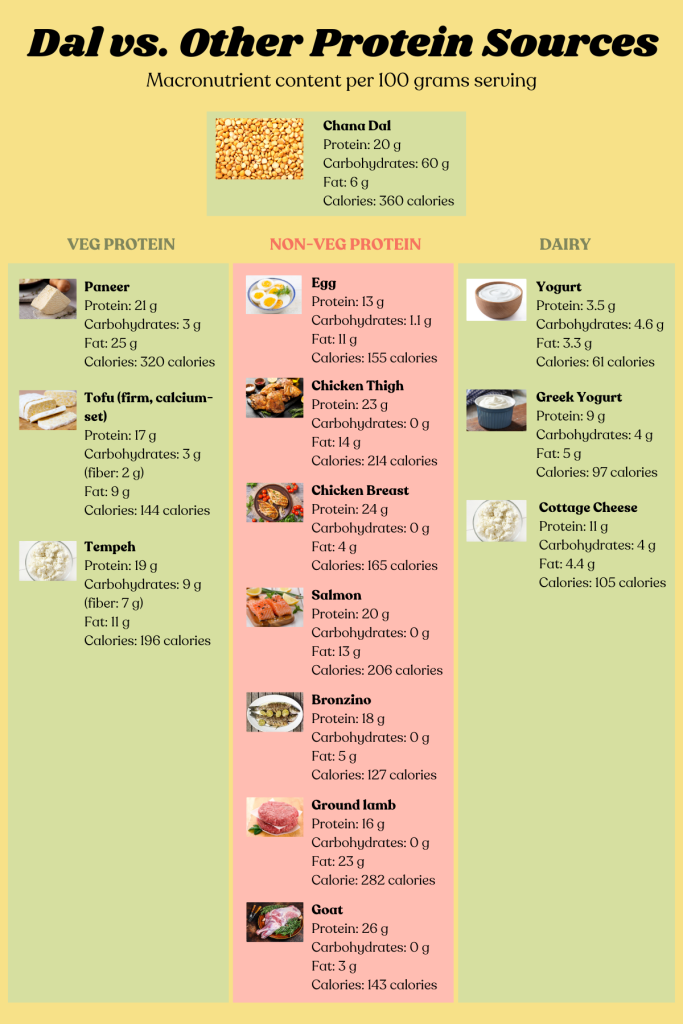
Take a look. Notice that all the vegetarian and non-vegetarian protein options I listed above contain fewer carbs and calories than dal. If weight management is a goal, then replacing a bowl of dal with a bowl of these other protein sources is better for overall health.
This means that although dal has protein, it’s not the best protein source you could be having, especially not on a daily basis. Paneer, tofu, and tempeh have a better protein-to-carb ratio. And if you’re into non-vegetarian food, nutritious foods like eggs, chicken breast, chicken thigh, lamb, goat, fish, and dairy provide an even superior protein-to-carb.
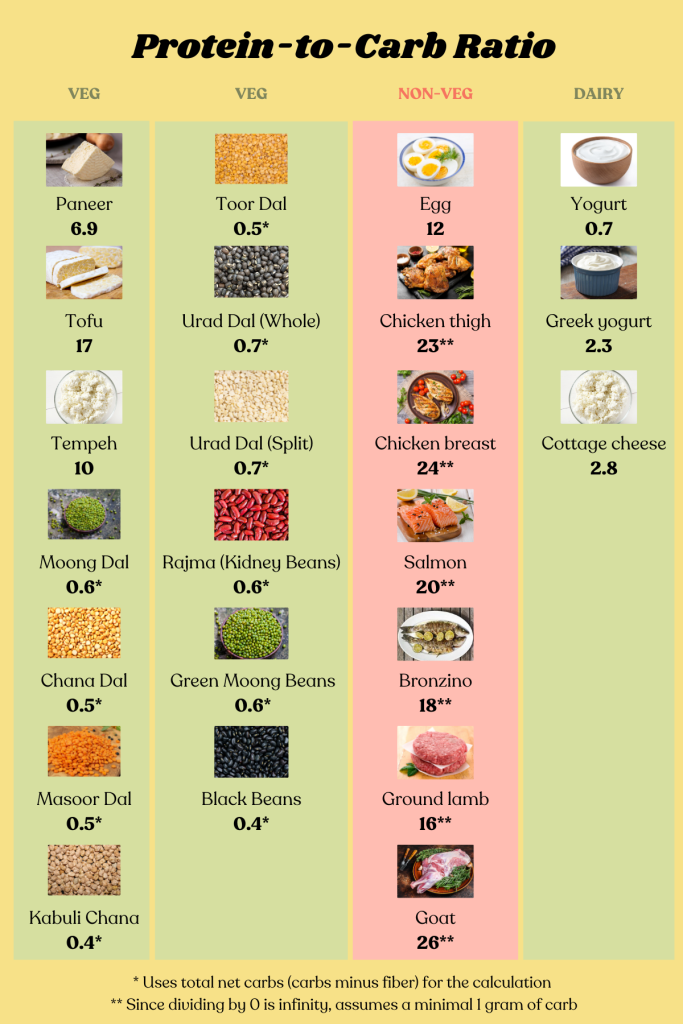
Another Downside of Dal: Low Protein Quality
When it comes to protein, simply looking at the quantity won’t cut it. We need to consider the quality as well. Quality can be determined by two factors: the amino acid profile and bioavailability. Now, let’s evaluate dal based on these criteria.
Amino acid profile of dal
Proteins are made up of amino acids, which are like building blocks. There are 20 different types of amino acids that can combine in various ways to create different proteins with unique functions and structures.
We can classify these 20 amino acids into two types: Essential and Non-essential.
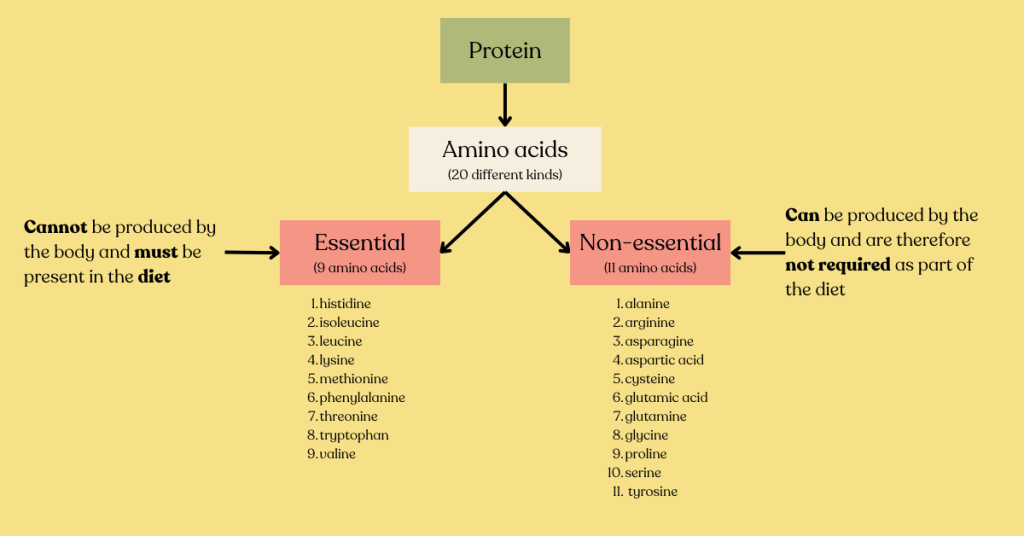
The body can create “non-essential” amino acids on its own, but it cannot do the same with “essential” amino acids. We must get these amino acids from food. When we evaluate the protein quality of a food, we need to consider whether it contains all the essential amino acids. If it doesn’t, then it’s an incomplete protein and we need to find another food source to get those missing amino acids.
Unfortunately, dal is an incomplete protein source because it lacks methionine and cysteine. These two amino acids play crucial roles in many physiological processes. Methionine is essential for synthesizing important compounds in the body, such as creatine, carnitine, and melatonin. Cysteine is a precursor to glutathione, a powerful antioxidant that helps protect cells from damage caused by free radicals. We don’t want to be deficient in either of these amino acids.
To address the issue of missing amino acids, we must combine dal with foods that are rich in methionine and cysteine, such as rice or wheat. This is the only way the body can get all the essential amino acids it needs to function properly. However, as we noted earlier, adding rice or roti to dal increases the carb content of the meal and skews the protein-to-carb ratio even more. This is why many Indians struggle with controlling their blood sugar levels.
Bioavailability of dal
When we talk about bioavailability, we’re referring to how well our bodies can absorb and use nutrients from the food we eat. There are two approaches to measuring a food’s bioavailability: PDCAAS and DIAAS. PDCAAS is an older approach that considers the entire digestion tract all the way to fecal matter. It can overestimates protein digestion as it also counts the protein absorbed by bacteria in the large intestine. DIAAS is a newer measure that accounts for amino acid digestibility only until the end of the small intestine. Moreover, the PDCAAS uses rat fecal matter while DIAAS uses pig intestinal tract, which is more similar to humans. Hence, DIAAS is a more accurate measurement.
Below is a chart of various foods and their PDCAAS score and DIAAS score.
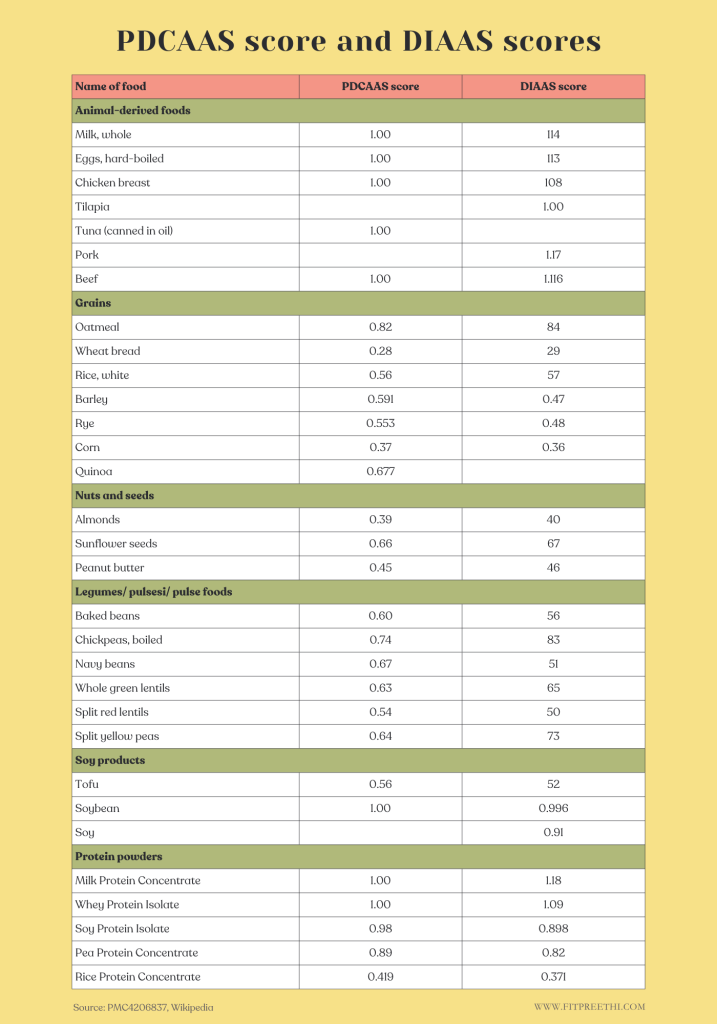
The body can only use about 10 grams of protein from a 20-gram portion of dal, as its bioavailability ranges from 40-65%. In contrast, animal-based proteins and dairy products typically have a bioavailability of 80% or higher, allowing the body to absorb most of the protein and nutrients from these foods.
The reduced bioavailability of dal is due to the presence of anti-nutrients like phytic acid and tannins, which bind to minerals such as iron, zinc, and calcium in the gut, making them less available for absorption.
To increase the bioavailability of protein in dal, you can soak it before cooking. However, this does not fully offset its lower bioavailability compared to animal-based proteins and dairy products.
Conclusion: Should You Eat Dal?
Dal is an inseparable part of Indian cuisine. But as we learned, dal is not a rich source of protein. It is high in carbs, is an incomplete protein, and has lower bioavailability. The best way to meet your daily protein requirement is by incorporating the other foods mentioned above:
- If you’re on a vegetarian diet, you can incorporate other plant-based complete protein sources like quinoa, buckwheat, soybeans, chia seeds, and hemp seeds to ensure you get all the essential amino acids your body needs.
- If you eat non-vegetarian food, then foods like eggs, chicken breast, chicken thigh, lamb, goat, and fish provide a much better protein-to-carb ratio than dal. Plus, red meat like goat comes with many additional health benefits. For example, it is loaded with vitamin b and is a good source of iron, which many Indians are deficient in.
- And don’t overlook about dairy! Its high protein content and superb bioavailability makes it a perfect addition to any meal, whether you are vegetarian or non-vegetarian.
That being said, if you like dal, eating it in moderation can still be beneficial for its high fibre content and low glycemic index (GI). No need to forgo a delicious Indian meal made with dal if it gives you joy, so long as it is not your primary protein source 🙂






